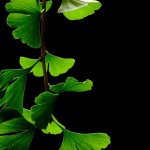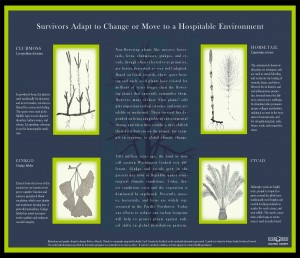Adaptive relatives of plants that appear earliest in the fossil records, such as ferns.
Non-flowering plants like mosses, horsetails, ferns, clubmosses, ginkgos, and cycads, though often referred to as primitive, are better described as very well adapted. Based on fossil records, these spore bearing and early seed plants have existed for millions of years longer than the flowering plants that currently outnumber them. However, many of these “first plants” still play important ecological roles, and some are edible or medicinal. Their survival has depended on being adaptable to environmental change and when they couldn’t, they shifted their distributions on the planet, for example, in response to global climate change.
Fifty million years ago, the land we now call eastern Washington looked very different. Ginkgo and cycads grew in the present day town of Republic under semi-tropical climatic conditions. Today, desert conditions exist and the vegetation is dominated by sagebrush. Presently, mosses, horsetails, and ferns are widely represented in the Pacific Northwest. Today our efforts to reduce our carbon footprint will help to protect plants against radical shifts in global distribution patterns.
Additional Resources:
- Raven, Peter; Ray Evert; and Susan Eichhorn. 2005. Biology of Plants, Seventh Edition. W.H. Freeman and Company. Worth Publishers. New York.
- First Plants Panel (pdf)
See other general botany textbooks, e.g. Stern or Mauseth.Steward, Wilson N. and Gar W. Rothwell. 1993. Paleobotany and the Evolution of Plants. Cambridge University Press. (advanced)


